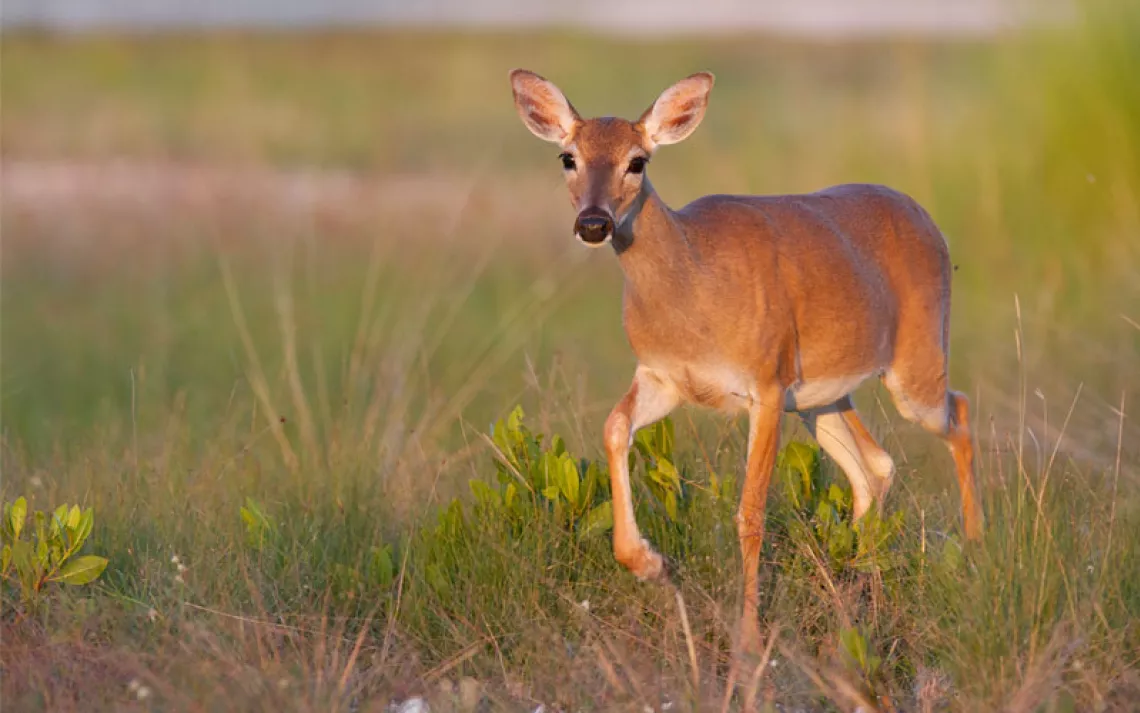Ménage à Trois in the Amazon
All photos courtesy of Aaron Pomerantz. Video courtesy of Aaron Pomerantz and Chris Johns.
Wasps that hatch out of fig fruits, orchids that mimic bees, and zombie fungi that take over the bodies of insects—these are just a few of the complicated evolutionary arrangements between different species in the Amazon. Aaron Pomerantz, a field biologist in Peru, recently discovered another one to add to the list: an unusual ménage à trois between caterpillars, ants, and a rare parasitic plant.
While exploring the primary forest near the Tambopata Research Center, Pomerantz noticed a tree trunk covered in small, yellow bulbs. On closer inspection, he saw that caterpillars were munching on the growths while Selva ants were lightly drumming on their backs and slurping up droplets of moisture from their bodies. Pomerantz didn’t know what was going on, but he knew he was observing something unique.

After some research back at the center, Pomerantz determined the caterpillars were the larvae of the butterfly family Lycaenidae and were endowed with a gland in their backs called a dorsal nectar organ. The organ secretes a liquid combination of sugars and amino acids that nourishes the ants, who reciprocate by protecting the caterpillars from predators—a type of mutualistic relationship known as myrmecophily (or ‘ant-love’ in Greek). Caterpillars without nectar organs are often prey for Selva ants, but these two species are allies.
On his second trip to the tree, Pomerantz spotted an adult butterfly with a yellow spot on its wings the same color and shape as the yellow bulbs resting on the trunk. Entomologists helped him confirm that the yeallow-spotted species was the Lycaenid hairstreak butterflyTerenthina terentia and the caterpillars were indeed the larvae of this species.
The identity of the bulbs proved more evasive. Aaron sent photos to colleagues who eventually helped him pinpoint it: Apodanthaceae, a mysterious family of plants that live within other plants, partially emerging for a brief period once a year to flower. Apodanthaceae do not have leaves and do not photosynthesize, relying on nutrients stolen from the host plant to survive.

In a reversal of roles, this parasitic plant is the suffering host for the hairstreak butterflies, its fruit devoured by hungry caterpillars. Add to the mix the ants that would normally eat the caterpillars acting as their paid bodyguards, and Pomerantz’s discovery presents quite a topsy turvy ecological relationship.
In undisturbed areas like Tambopata, intricate relationships like this are just being discovered. Yet habitat destruction and climate change have led to an accelerated loss of species so severe that biologists are calling it the sixth great extinction. Unless we can rein in anthropogenic impacts, evolutionary gems like the ant-caterpillar-plant adaptation will disappear before we even know they exist.
 The Magazine of The Sierra Club
The Magazine of The Sierra Club



